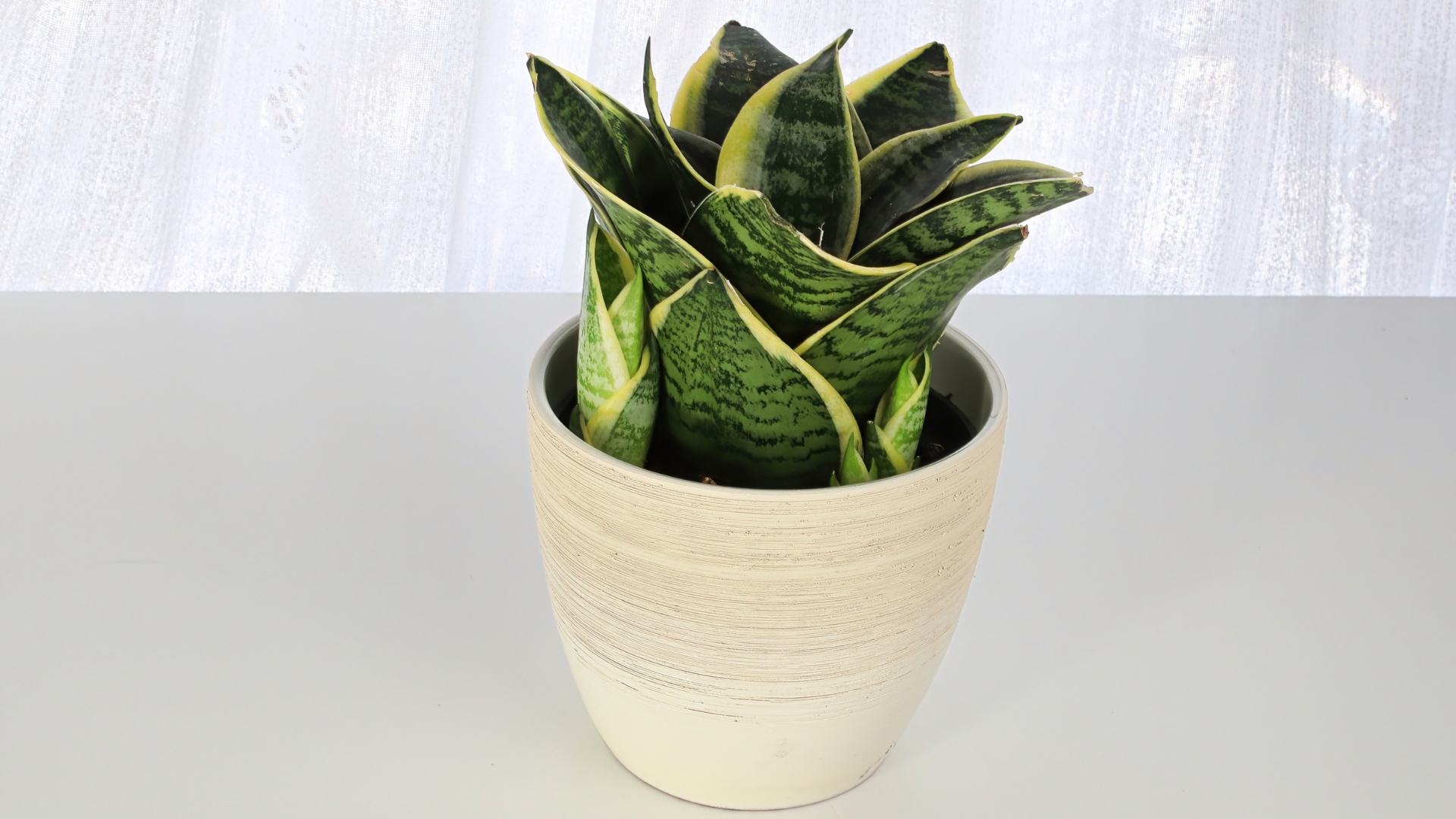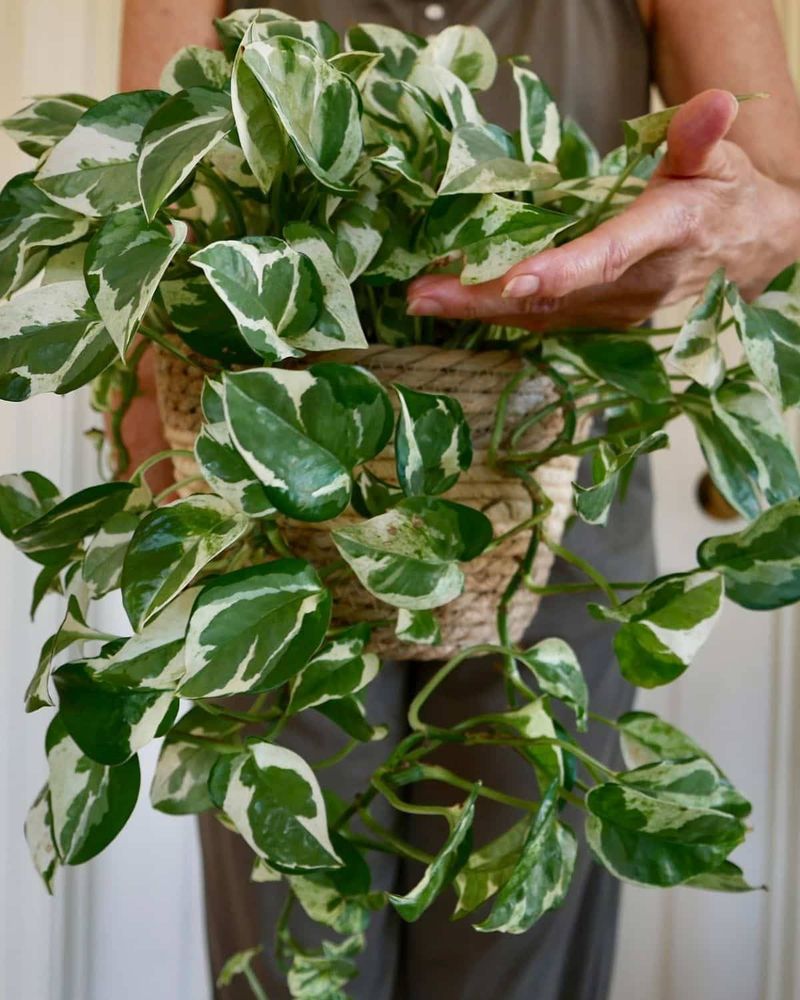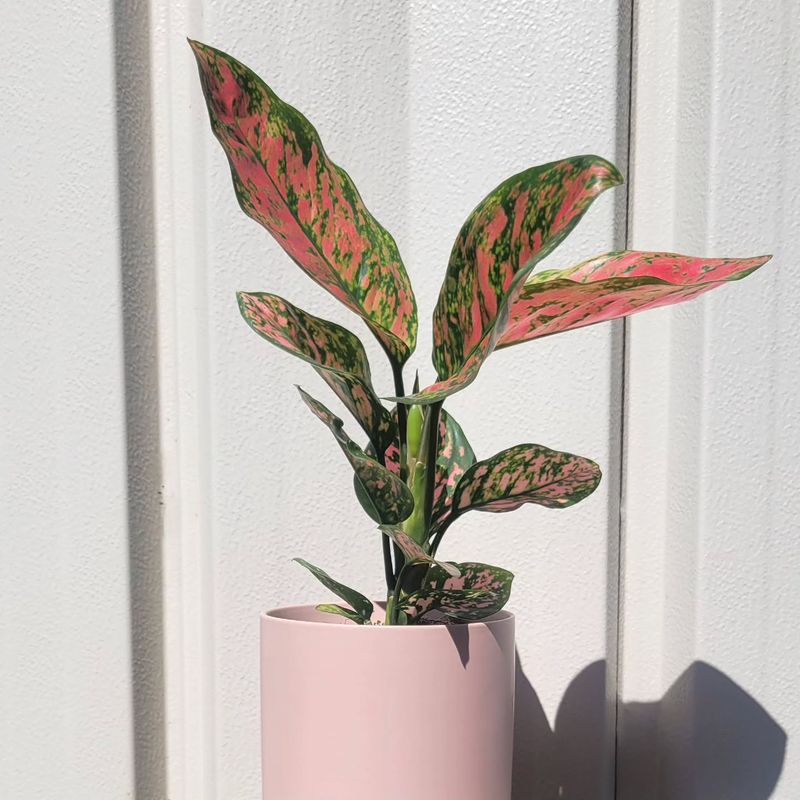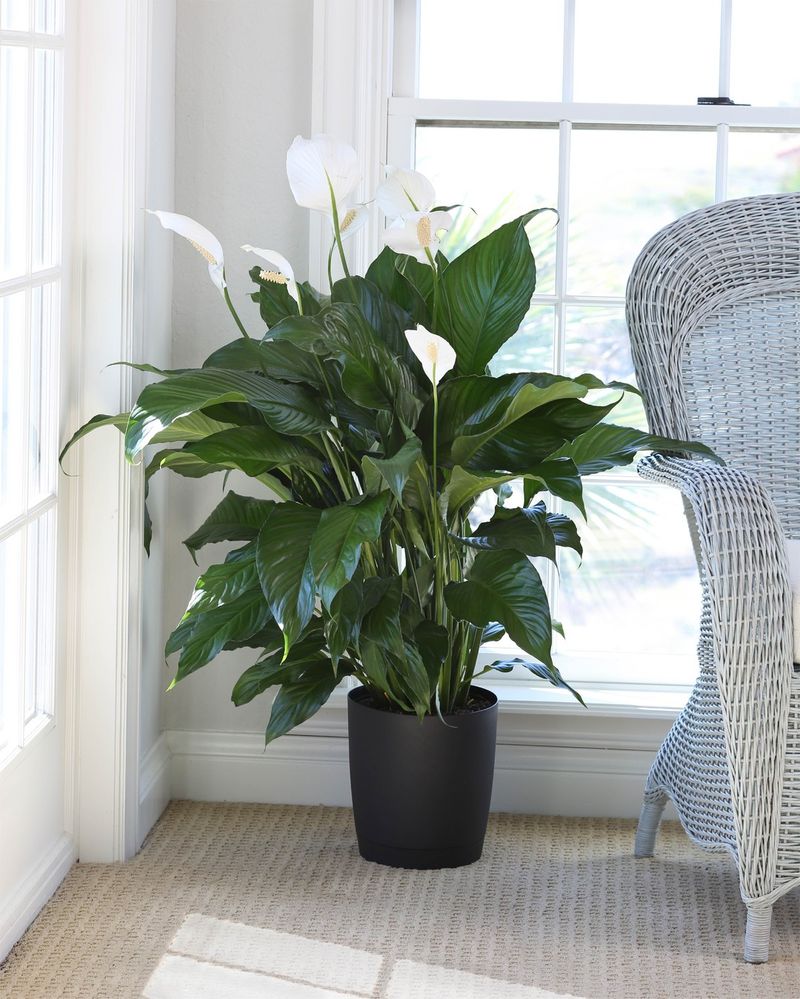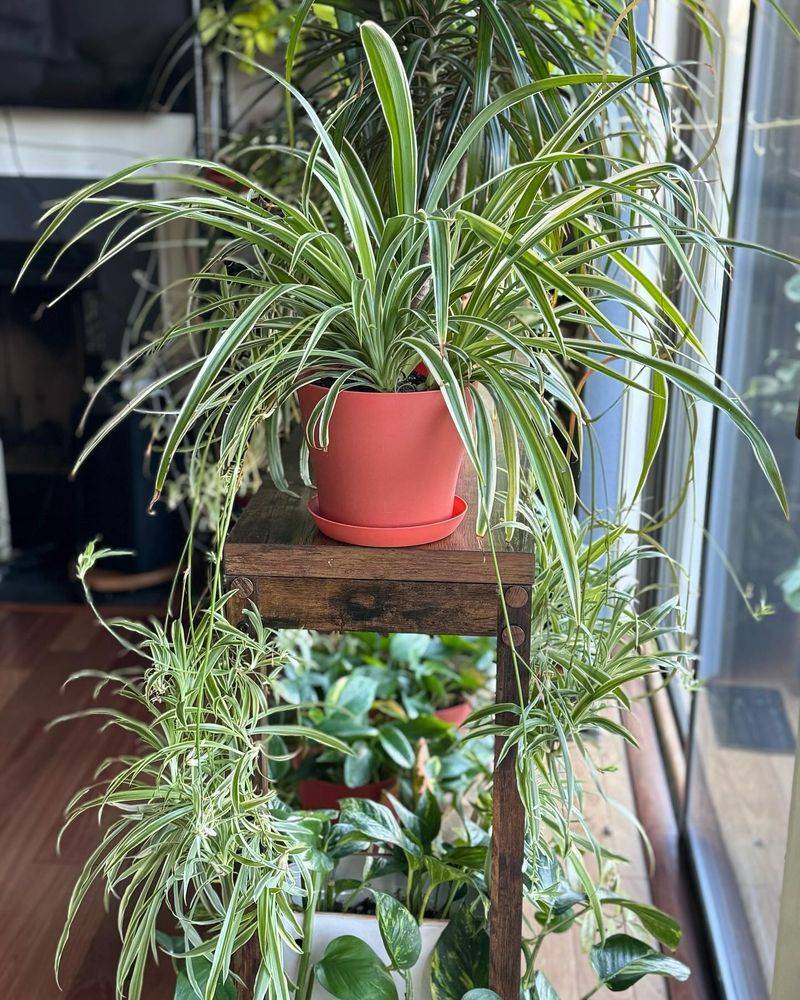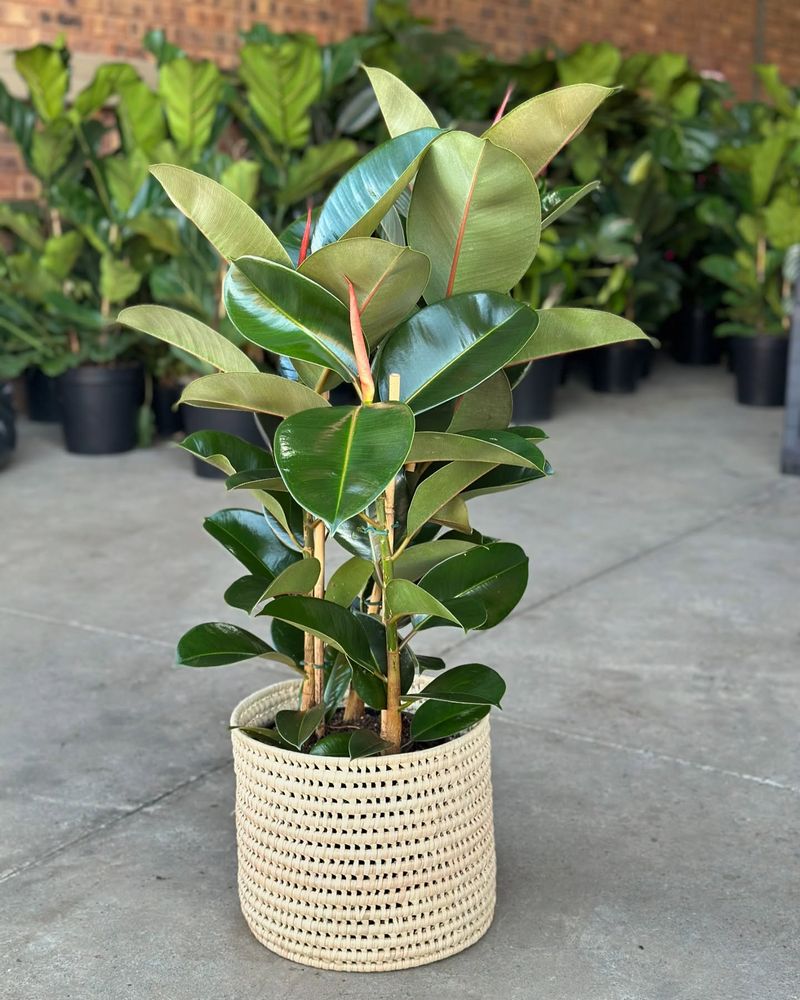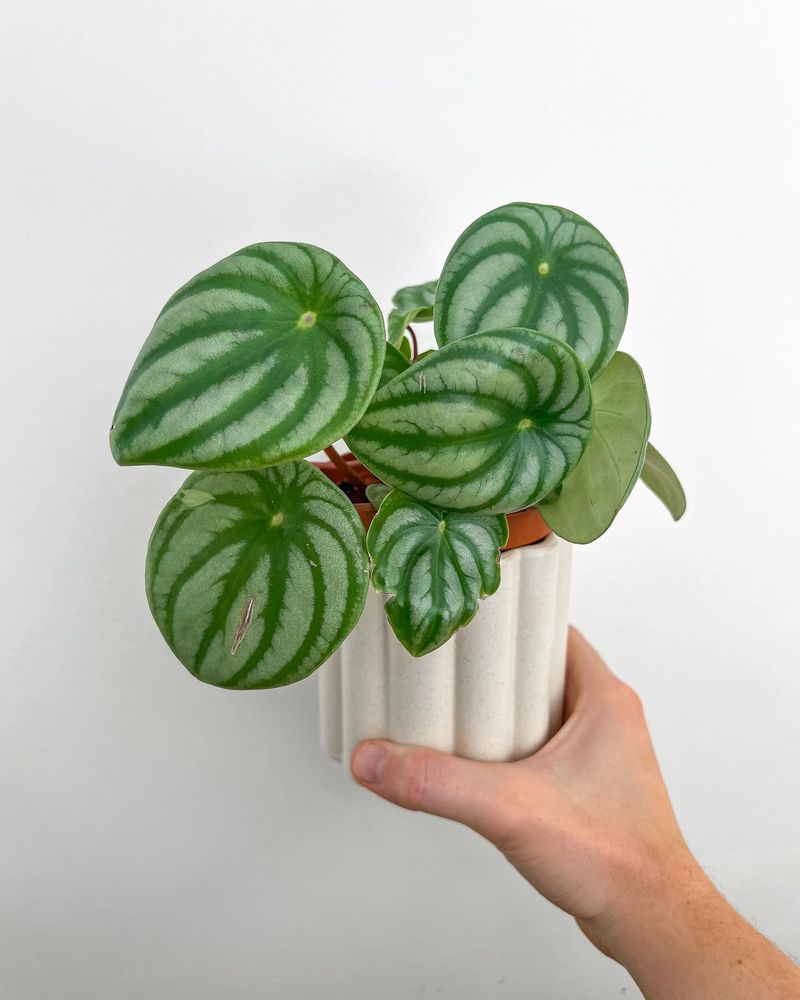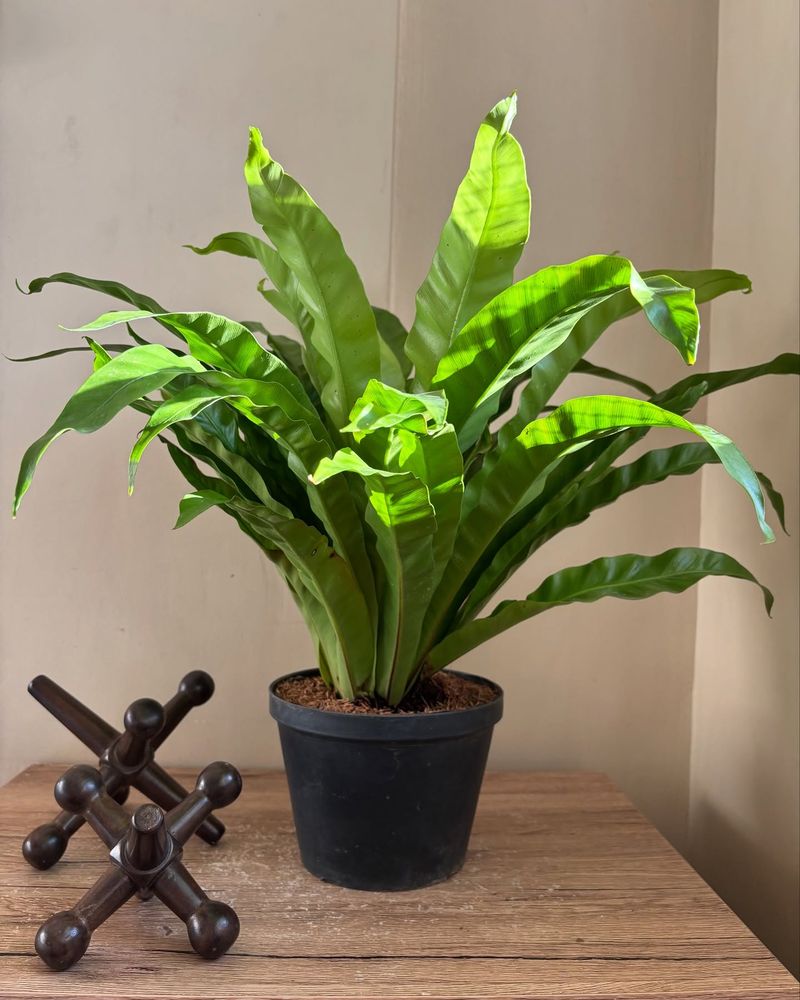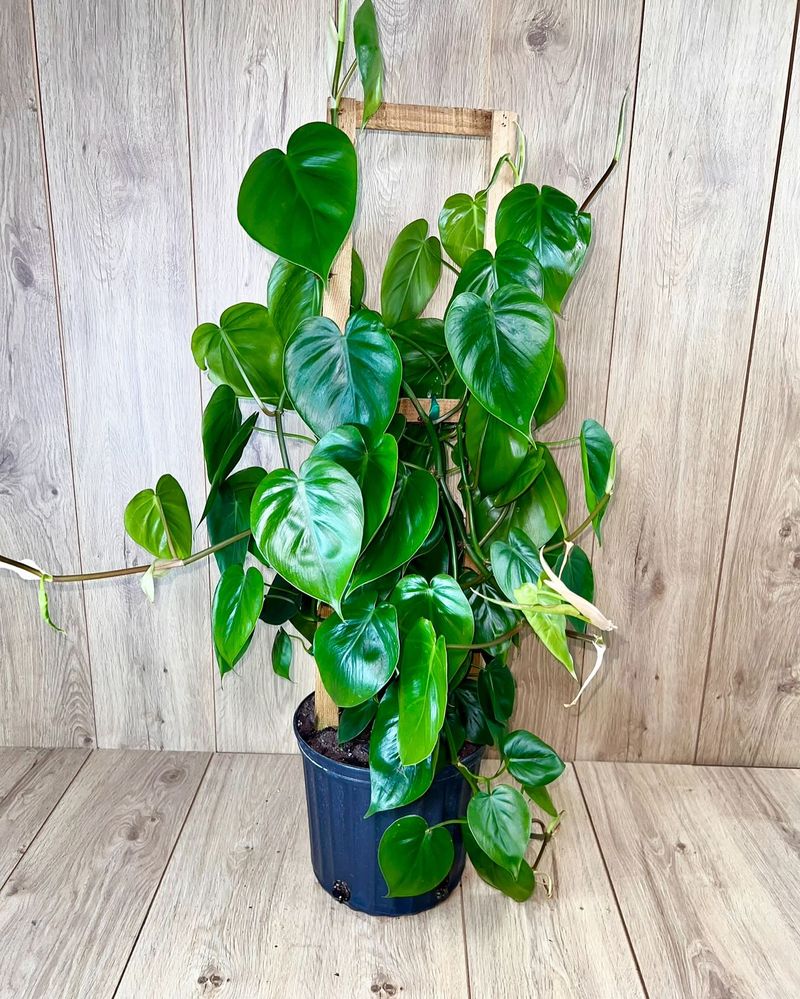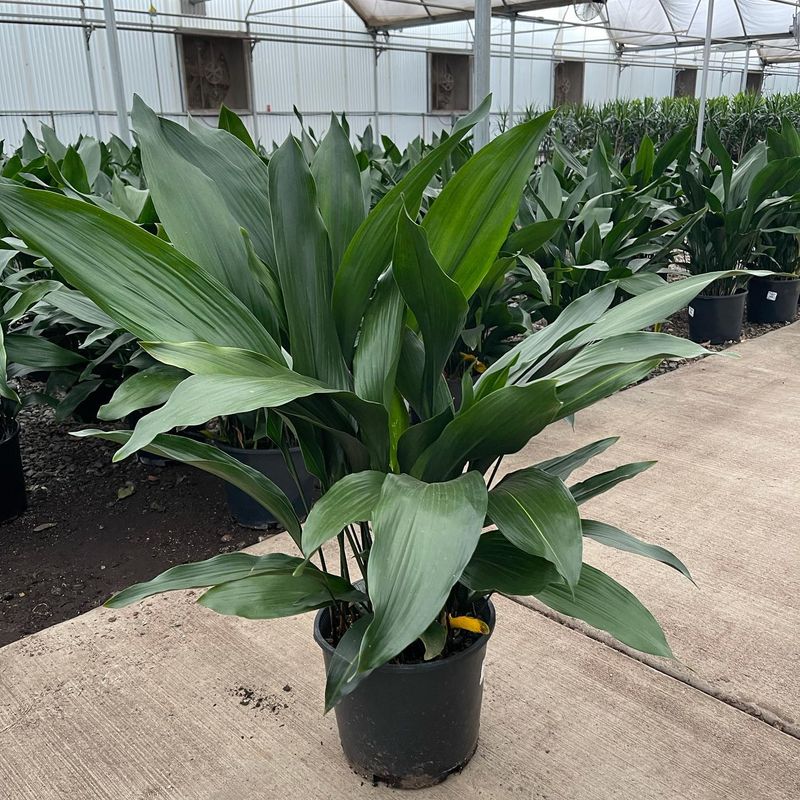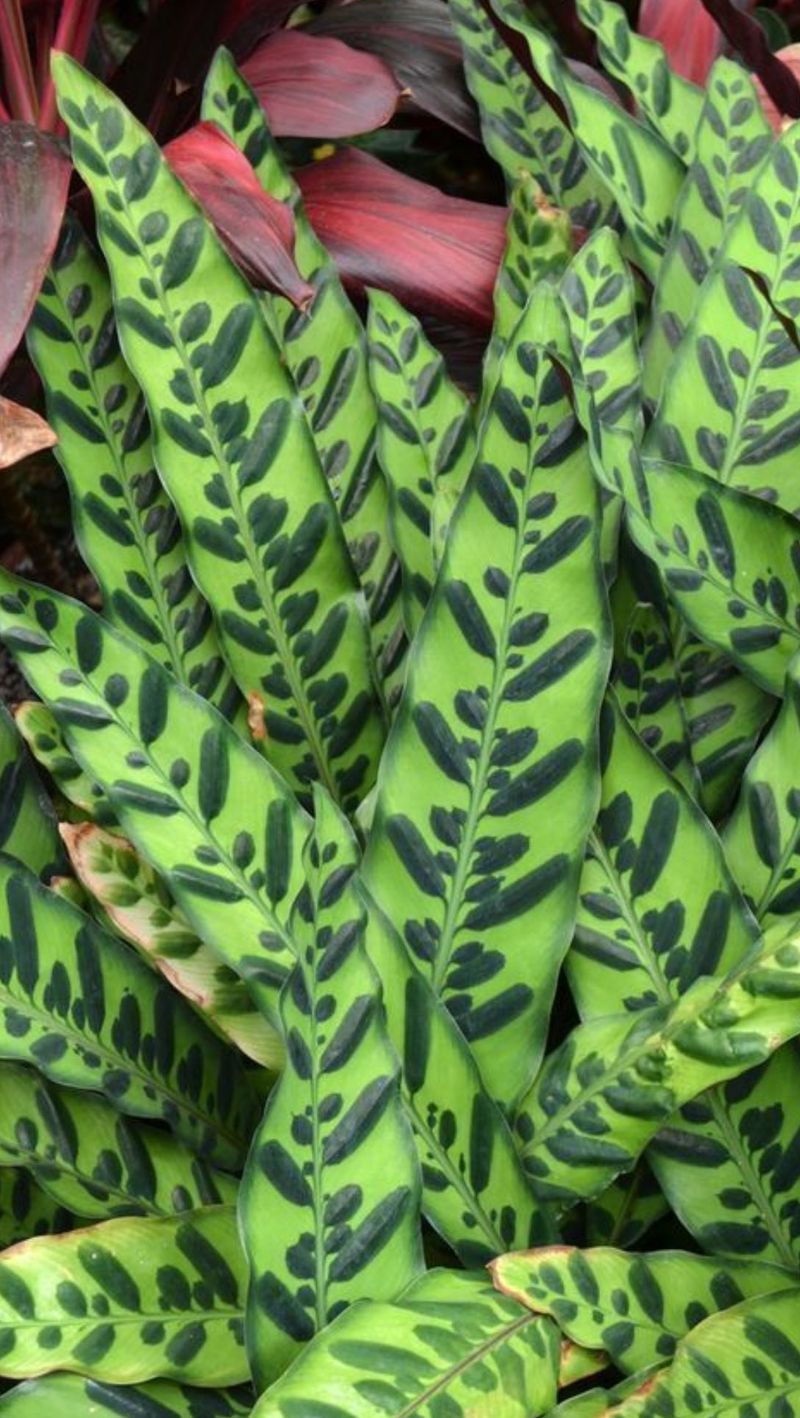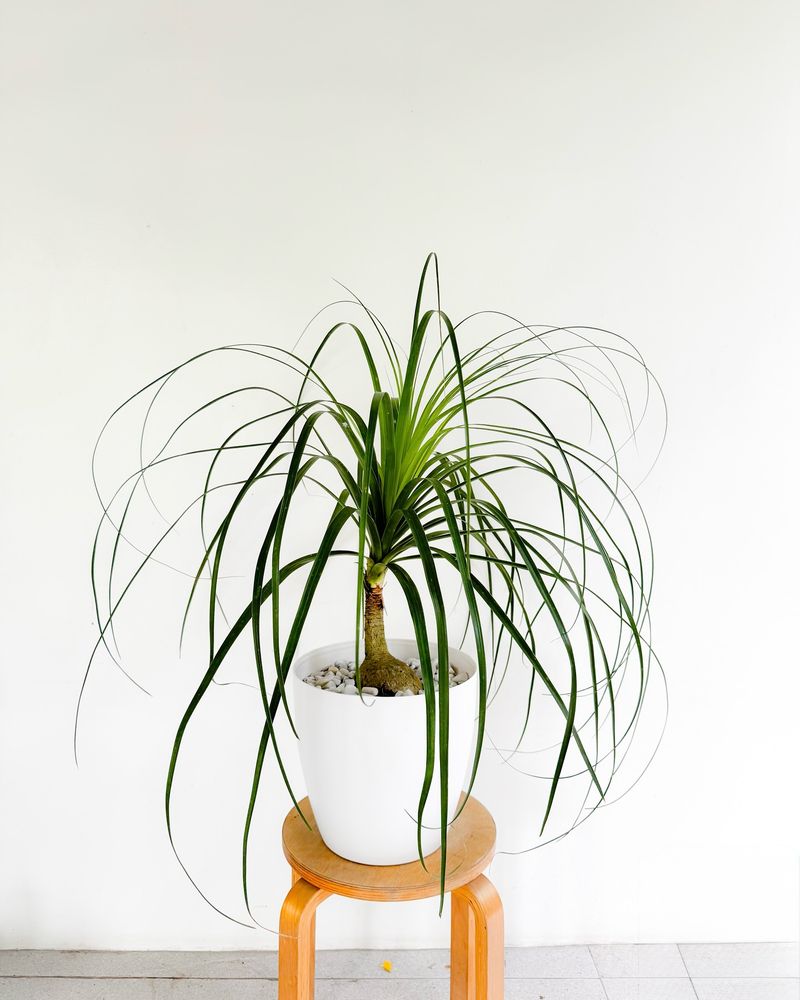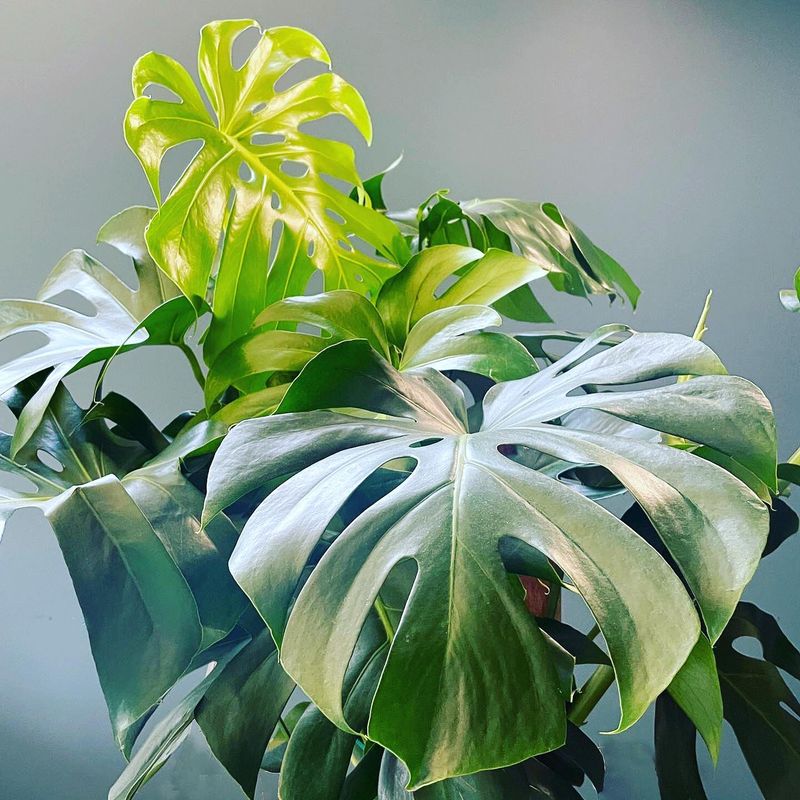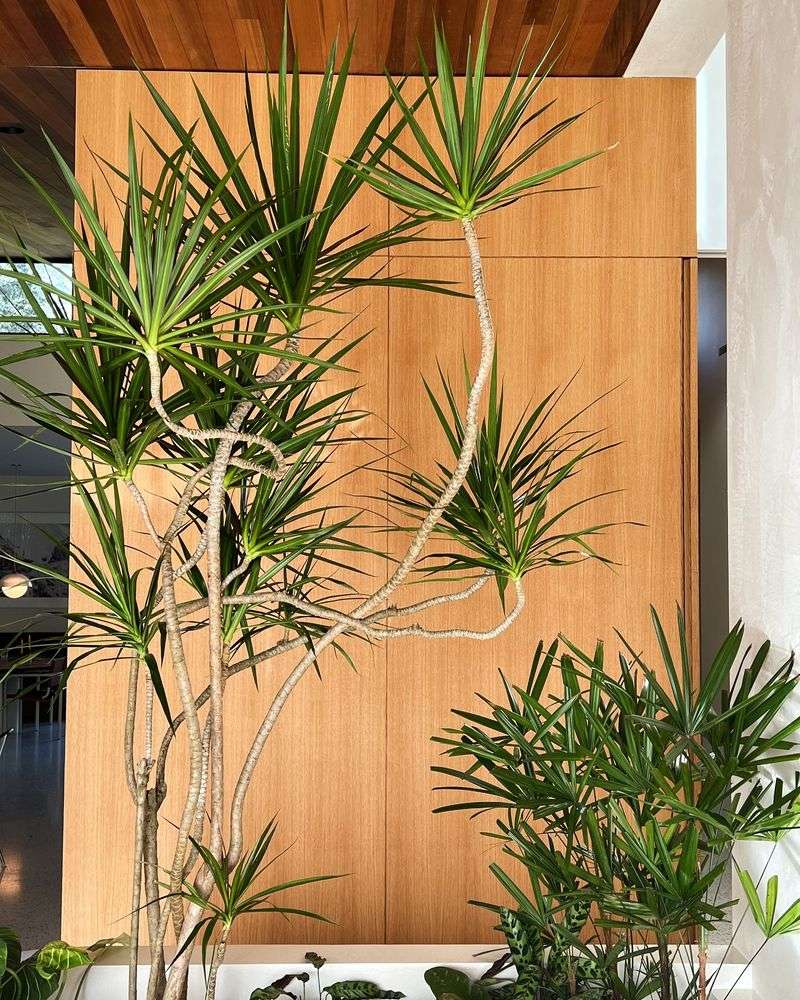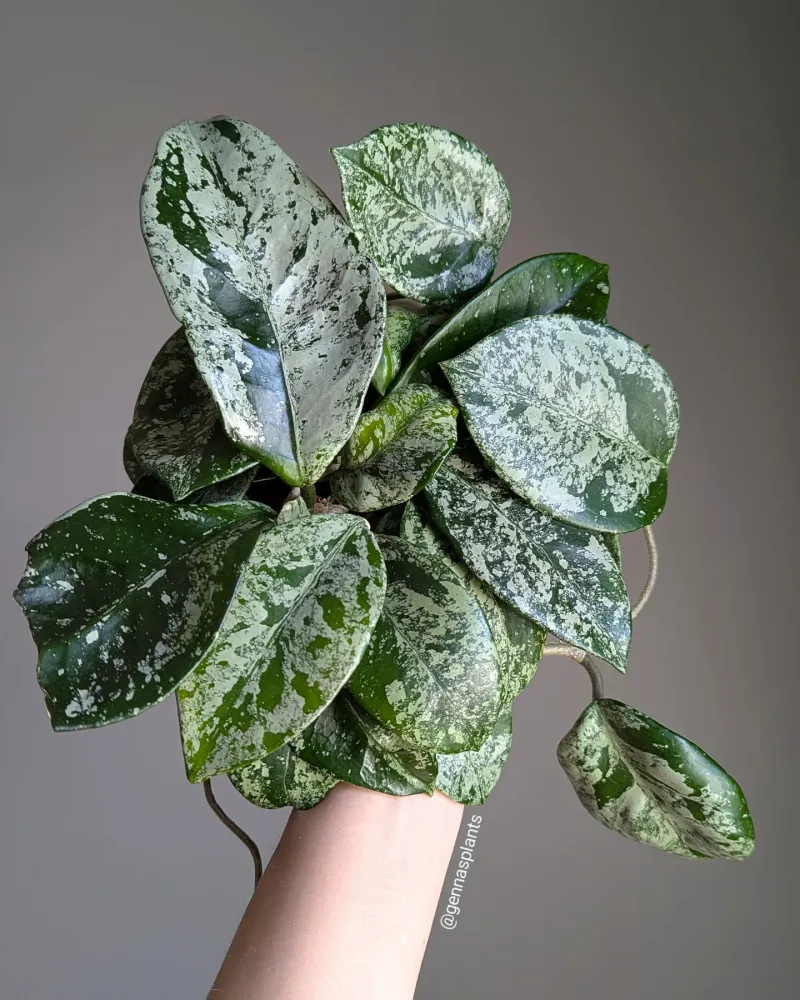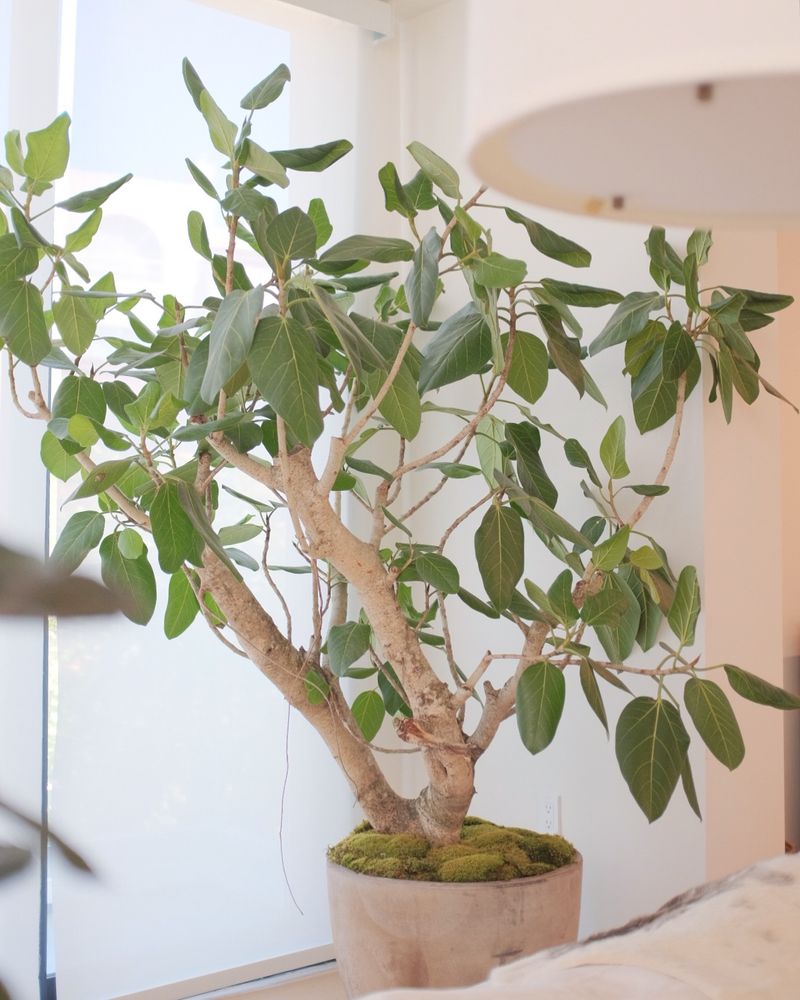Snake plants are great, but if you’re looking for something a bit different that still offers easy care and air-purifying benefits, I’ve got you covered!
These 16 plants will bring that same fresh, green vibe but with a unique twist. Some are just as low-maintenance, while others add a pop of color or texture to keep things interesting.
Let’s explore some stunning alternatives to the snake plant that will keep your space looking chic and fresh with little effort. Ready to switch it up?
1. ZZ Plant
Looking for something nearly indestructible? The ZZ plant thrives on neglect with its glossy, dark green leaves that stay beautiful even when you forget to water it. Its unique bulbous root system stores water, making it drought-tolerant.
The architectural stems create an elegant silhouette that fits modern decor perfectly. Unlike snake plants, ZZ plants have a more spreading, bushy growth habit that fills space beautifully in any room.
2. Pothos
Cascading from shelves or climbing up moss poles, pothos vines bring dynamic movement to any space. Their heart-shaped leaves come in varieties ranging from golden-streaked to marbled white and green, offering more color options than snake plants.
Pothos plants purify the air while demanding minimal attention. They thrive in various light conditions and forgive inconsistent watering, making them perfect for busy people or beginners looking to expand their plant collection.
3. Chinese Evergreen
Vibrant patterned leaves make Chinese Evergreens showstoppers in any room. These tropical beauties offer incredible variety—from deep greens to pink-flushed varieties like ‘Pink Valentine’—giving you more decorative options than standard snake plants.
They tolerate low light conditions beautifully, perfect for brightening dim corners. Chinese Evergreens grow slowly and compactly, maintaining their tidy appearance without much pruning or maintenance.
4. Peace Lily
Elegant white blooms rise above glossy green foliage, adding a touch of sophistication snake plants can’t match. Peace lilies dramatically droop when thirsty, then perk right back up after watering—a helpful visual reminder for forgetful plant parents.
Beyond their beauty, these plants are champion air purifiers. They remove toxins like benzene and formaldehyde while adding humidity to dry indoor environments, making them as functional as they are beautiful.
5. Spider Plant
Arching stems filled with babies make spider plants the gift that keeps giving. The cascading foliage creates movement and texture, with variegated varieties adding bright stripes to enliven any space.
Spider plants thrive when slightly root-bound and produce adorable plantlets you can share with friends. They’re completely non-toxic to pets, unlike snake plants, making them a safer choice for homes with curious cats and dogs.
6. Rubber Plant
Dramatic burgundy or glossy green leaves make rubber plants statement pieces in any room. Their upright growth creates height and visual interest, while requiring far less floor space than many other large houseplants.
Unlike finicky plants, rubber trees bounce back easily from occasional neglect. Their thick, leathery leaves hold moisture, meaning less frequent watering than many houseplants, while still providing that lush, jungle-like atmosphere that snake plants can’t deliver.
7. Peperomia
Compact and charming, peperomias pack personality into small spaces where snake plants might overwhelm. Their diverse leaf shapes range from rippled to heart-shaped to tiny buttons, with textures from glossy to fuzzy depending on the variety.
These miniature beauties thrive on windowsills and desktops. Peperomias store water in their thick leaves, making them forgiving when you forget to water, while their slow growth means they won’t quickly outgrow their welcome.
8. Bird’s Nest Fern
Wavy, bright green fronds create a softer, more tropical vibe than snake plants’ rigid leaves. Bird’s nest ferns form a natural rosette shape that looks stunning on tabletops or in hanging planters, bringing woodland charm indoors.
Unlike many fussy ferns, these plants tolerate average home humidity quite well. Their non-toxic nature makes them safe around pets and children, while still providing that lush, jungle-like atmosphere that makes plant lovers swoon.
9. Philodendron Heartleaf
Velvety heart-shaped leaves tumble gracefully from shelves and hanging planters, creating living curtains of green. Their faster growth provides quicker gratification than slow-growing snake plants, rapidly filling empty spaces with lush foliage.
Heartleaf philodendrons adapt to various light conditions and bounce back quickly from neglect. Their trailing stems can be easily pruned and propagated in water, letting you multiply your plant collection without spending extra money.
10. Cast Iron Plant
True to its name, this plant withstands conditions that would kill lesser houseplants. Long, arching dark green leaves create a fountain-like display that’s more dynamic than snake plants’ straight, upright growth.
Cast iron plants tolerate deep shade where most houseplants struggle to survive. They maintain their good looks despite irregular watering, fluctuating temperatures, and even occasional frost, making them perfect for homes with inconsistent care routines.
11. Calathea Rattlesnake
Painterly leaves with intricate patterns move throughout the day, giving you a living art piece unlike static snake plants. The purple undersides flash dramatic color when leaves fold up at night, adding an element of surprise to your plant collection.
Rattlesnake plants perform a fascinating daily dance, raising their leaves at dusk and lowering them at dawn. Their dramatic wavy-edged foliage with distinctive markings makes them conversation pieces that bring tropical forest vibes to any room.
12. Ponytail Palm
Fountains of slender leaves burst from bulbous trunks, creating whimsical living sculptures unlike any snake plant. Despite the name, ponytail palms aren’t actually palms but succulents, storing water in their trunks for drought resistance.
These quirky plants bring personality and movement to rooms with their swaying, grass-like foliage. They thrive in bright spots but adapt to medium light, growing slowly enough to remain manageable for years while developing more character with age.
13. Monstera Deliciosa
Iconic split leaves create instant tropical drama that basic snake plants can’t match. As they mature, monsteras develop their characteristic holes and splits, becoming more sculptural and impressive with each new leaf.
Despite their exotic appearance, these plants are surprisingly easy to grow. Monsteras adapt to various light conditions and watering schedules, thriving in typical home environments while creating that coveted jungle aesthetic that’s all over social media.
14. Dracaena Marginata
Slender trunks topped with spiky leaf tufts create architectural interest beyond what snake plants offer. The thin, strappy leaves with red edges add a pop of color while maintaining the clean lines that make snake plants popular.
Dracaena marginatas grow into small indoor trees over time, adding vertical drama to rooms. They thrive in average home conditions with minimal care, purifying the air while creating that designer look you see in home decor magazines.
15. Hoya Carnosa
Waxy leaves with subtle speckles create year-round interest, while the occasional clusters of star-shaped, fragrant flowers provide delightful surprises. Unlike snake plants, hoyas offer both beautiful foliage and sweet-scented blooms.
These long-lived plants become heirlooms, often thriving for decades. Hoyas prefer being slightly pot-bound and don’t mind drying out between waterings, making them perfect for busy people who still want the reward of occasional flowers.
16. Ficus Audrey
Velvety leaves with prominent veins offer more texture and visual interest than snake plants’ smooth surfaces. Less finicky than its cousin the fiddle leaf fig, Ficus Audrey forgives occasional neglect while still providing that coveted tree-like structure.
The fuzzy white-green leaves create a softer appearance than many houseplants. As they mature, these plants develop character-filled trunks that become focal points in any room, growing into statement pieces that transform spaces.

